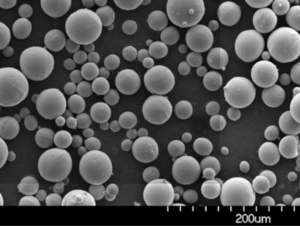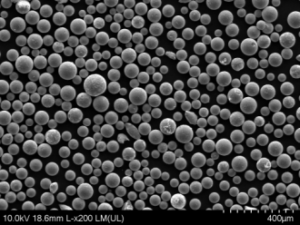Vue d'ensemble
La poudre de cuivre pur (Cu) est une poudre métallique très appréciée pour son excellente conductivité, sa malléabilité et sa polyvalence dans les applications industrielles. En raison de sa grande pureté, Poudre de cuivre pur est un composant essentiel dans des domaines tels que l'électronique, la métallurgie, la fabrication additive et les processus chimiques. Avec une composition typique supérieure à 99,5 % de cuivre pur, cette forme de poudre de cuivre offre aux ingénieurs, aux fabricants et aux chercheurs un matériau précieux doté d'attributs uniques.
Qu'est-ce qui fait la valeur de la poudre de cuivre pur ? Sa combinaison de caractéristiques : conductivité électrique et thermique élevée, ductilité et capacité à être mélangée à d'autres matériaux ou à être moulée sous diverses formes. Que vous cherchiez à produire des composants électroniques complexes ou des pièces structurelles robustes, la poudre de cuivre pur constitue une option flexible et performante.
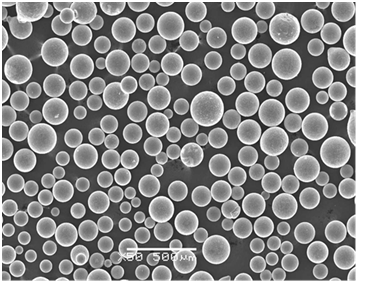
Composition de la poudre de cuivre pure
La poudre de cuivre pur se compose principalement de cuivre (Cu) finement broyé. Toutefois, en fonction de l'application, il peut exister de légères variations dans les niveaux de pureté, la taille des particules et la forme, ce qui permet aux fabricants d'adapter la poudre à des besoins spécifiques. En voici un aperçu :
| Composant | Composition typique (%) |
|---|---|
| Cuivre (Cu) | ≥ 99.5 |
| Oxygène (O) | < ; 0.3 |
| Fer (Fe) | < ; 0.05 |
| Autres impuretés | < ; 0.15 |
Ce niveau de pureté garantit des performances optimales, en particulier dans les applications électroniques et conductrices où les propriétés électriques du cuivre sont essentielles. La plupart des poudres de cuivre pur sont traitées à l'aide de techniques d'atomisation, qui permettent un contrôle précis de la taille et de la forme des particules, influençant ainsi des propriétés telles que la fluidité et la compressibilité.
Caractéristiques des Poudre de cuivre pur
Pour apprécier toutes les capacités de la poudre de cuivre pur, explorons ses principales caractéristiques. Chaque caractéristique joue un rôle essentiel, influençant le comportement de la poudre dans différentes applications.
| Caractéristique | Description |
|---|---|
| Conductivité électrique | La conductivité du cuivre n'est surpassée que par celle de l'argent, ce qui rend la poudre de cuivre pur très efficace dans les applications électroniques et de gestion thermique. |
| Conductivité thermique | Grâce à son excellente conductivité thermique, la poudre de cuivre pur dissipe efficacement la chaleur, ce qui est crucial dans l'électronique et les échangeurs de chaleur. |
| Ductilité | La ductilité permet à la poudre de Cu pur d'être moulée et remodelée sans se fracturer, ce qui est idéal pour la fabrication additive et la métallurgie. |
| Résistance à la corrosion | Alors que le cuivre développe une couche d'oxyde en surface, la poudre de cuivre pur résiste à une corrosion plus profonde, protégeant ainsi les fonctions essentielles dans divers environnements. |
| Morphologie des particules | La morphologie, généralement sphérique ou irrégulière, influe sur la fluidité, la densité et la façon dont la poudre se mélange ou se tasse dans les moules ou les processus additifs. |
| Densité | La poudre de cuivre pur a une densité d'environ 8,96 g/cm³, ce qui peut affecter la façon dont elle se mélange ou se compacte, en particulier dans les applications à haute densité. |
| Point de fusion | Le cuivre fond à 1 084 °C, ce qui lui confère une stabilité à haute température, essentielle dans les processus de frittage et de moulage par injection de métaux. |
Forme et taille des particules dans la poudre de cuivre pur
La forme et la taille des particules de la poudre de cuivre pur peuvent varier et avoir un impact sur les propriétés telles que le débit, la compressibilité et même le comportement au frittage. Voici les formes les plus courantes et leurs effets :
| Forme des particules | Description | Applications |
|---|---|---|
| Sphérique | Fournit un flux et une densité d'emballage uniformes, idéal pour l'impression 3D et les revêtements. | Fréquemment utilisé dans la métallurgie des poudres et la fabrication additive pour le dépôt de couches homogènes. |
| Irrégulier | Offre une surface plus importante, améliorant l'adhérence dans les composites ou les composés. | Préféré dans les applications où une liaison forte ou un verrouillage mécanique avec d'autres matériaux est nécessaire. |
| Flocon | Particules minces et plates qui maximisent le contact avec la surface. | Souvent utilisé dans les revêtements et peintures conducteurs, où la couverture et la conductivité sont essentielles. |
Applications de la poudre de cuivre pur
La poudre de cuivre pur est utilisée dans une myriade d'industries, chacune exploitant ses qualités spécifiques. Voici un aperçu de ses principales applications :
| L'industrie | application | Pourquoi la poudre de cuivre pure ? |
|---|---|---|
| Électronique | Encres conductrices, circuits imprimés et blindage EMI | La conductivité du cuivre est idéale pour les composants électroniques de précision. |
| Métallurgie | Métallurgie des poudres, frittage et brasage | La forme de la poudre permet de mouler et de compacter des formes complexes avec une excellente résistance mécanique. |
| Fabrication additive | impression 3D de pièces fonctionnelles et de prototypes | La fluidité et la malléabilité de la poudre de cuivre pur conviennent à la production de dessins complexes et à l'intégrité structurelle. |
| Automobile | Dissipateurs de chaleur, matériaux de friction et piles à combustible | La poudre de cuivre pur dissipe efficacement la chaleur, ce qui en fait un excellent choix pour la gestion thermique des automobiles et les solutions énergétiques. |
| Industrie chimique | Catalyseurs et revêtements conducteurs | La réactivité du cuivre avec certains composés et son excellente conductivité favorisent les réactions chimiques et la durabilité des produits. |
| Dispositifs médicaux | Surfaces et implants antimicrobiens | Le cuivre possède des propriétés antimicrobiennes naturelles, cruciales dans les équipements médicaux pour réduire les risques d'infection. |
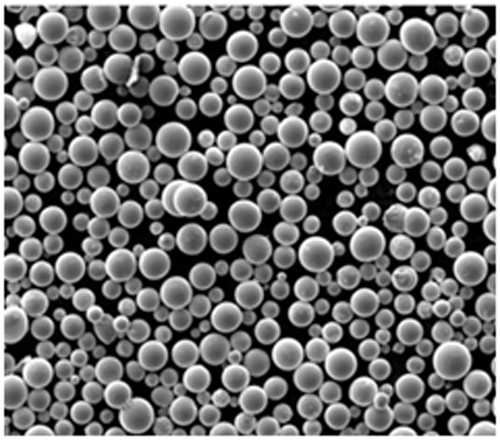
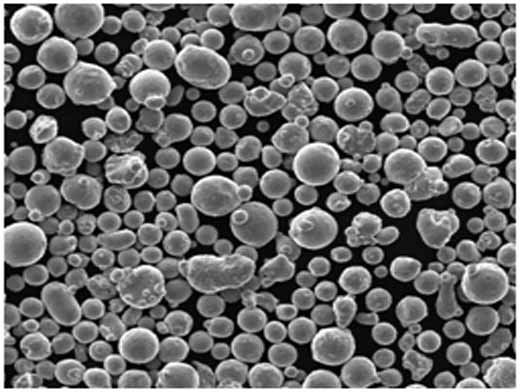

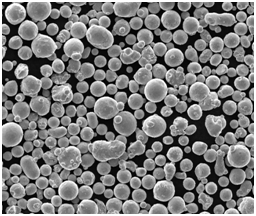

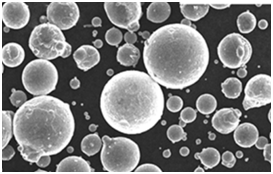
Spécifications, tailles, qualités et normes de la poudre de cuivre pure
Comprendre les spécifications, les tailles, les qualités et les normes de la poudre de cuivre pur peut vous aider à sélectionner le matériau adéquat pour un projet spécifique. La pureté, la taille des particules et la forme ont un impact significatif sur les performances de chaque application.
| Spécifications | Détails |
|---|---|
| La pureté | ≥ 99,5 % (souvent jusqu'à 99,9 % pour les applications haut de gamme) |
| Taille des particules | Gamme allant de l'échelle nanométrique (<100 nm) au micron (jusqu'à 100 μm) |
| Densité | 8.96 g/cm³ |
| Point de fusion | 1,084°C |
| Conductivité | Environ 5,96 x 10^7 S/m |
| Classes normales | ASTM B212, ASTM B848, ISO 4287 |
| Morphologie | Disponible sous forme de sphères, de paillettes et de formes irrégulières |
Chacune de ces qualités et spécifications est conforme aux normes internationales telles que l'ASTM et l'ISO, ce qui garantit que la poudre répond aux exigences de haute performance. Voici un aperçu des tailles et des qualités les plus courantes :
Tailles et qualités courantes
| Grade | Pureté (%) | Gamme de tailles de particules typiques (μm) | Meilleur pour les applications |
|---|---|---|---|
| CP1 | 99.5 | 10-45 | Encres conductrices, circuits imprimés |
| CP2 | 99.8 | 20-60 | Métallurgie des poudres, frittage |
| CP3 | 99.9 | 1-15 | Catalyseurs, revêtements spécialisés |
| Nano-Cu | 99.9 | <0.1 | Électronique avancée, nanotechnologies |
| Cuivre lamellaire | 99.5 | 15-45 | Peintures conductrices, blindage EMI |
| Cu sphérique | 99.7 | 20-100 | Fabrication additive, impression 3D |
Avantages et limites de la poudre de cuivre pure
Choisir la poudre de cuivre pur plutôt que d'autres poudres métalliques comme l'argent, l'aluminium ou même le nickel présente des avantages uniques, mais il y a aussi certaines limites à prendre en compte. Voici une analyse comparative :
| Aspect | Avantages de la poudre de cuivre pure | Limites de la poudre de cuivre pure |
|---|---|---|
| Conductivité | Conductivité électrique et thermique supérieure (proche de l'argent) | Moins élevé que l'argent, mais beaucoup plus élevé que l'aluminium ou le nickel |
| Coût | Moins cher que l'argent tout en offrant une conductivité comparable | Plus cher que l'aluminium, en particulier pour les qualités de haute pureté |
| Malléabilité | Très ductile, il convient au moulage et au formage | La malléabilité peut entraîner une déformation sous contrainte |
| Résistance à la corrosion | Bonne résistance à la corrosion dans les environnements non acides | Susceptible de s'oxyder, ce qui affecte la conductivité de la surface |
| Disponibilité | Largement disponible en différentes qualités, tailles de particules et formes | Certaines tailles et formes spéciales peuvent être plus coûteuses |
| Réactivité | Moins réactif que d'autres métaux dans des environnements modérés | Peut réagir avec certains produits chimiques, ce qui limite son utilisation dans certaines applications |
Principaux modèles de poudres de cuivre pur et leurs applications spécifiques
Examinons quelques-uns des meilleurs modèles de poudre de cuivre pur actuellement disponibles, chacun étant conçu pour des applications industrielles spécifiques. Chaque modèle présente des caractéristiques uniques, conçues pour répondre aux exigences de processus particuliers, de l'impression 3D de haute précision aux revêtements conducteurs et à l'électronique de haute performance.
| Modèle | La pureté | Taille des particules (μm) | Forme | Applications idéales |
|---|---|---|---|---|
| Poudre de cuivre CP1 | 99.5% | 10-45 | Irrégulier | Encres conductrices, circuits imprimés et applications électroniques de base |
| Poudre de cuivre CP2 | 99.8% | 20-60 | Sphérique | Convient à la métallurgie des poudres et au frittage en raison de sa fluidité |
| Poudre de cuivre CP3 | 99.9% | 1-15 | Flocon fin | Revêtements conducteurs haut de gamme et composants électroniques spécialisés |
| Nano-Cu 99,9 | 99.9% | <0.1 | Nano | Dispositifs électroniques avancés, capteurs, nanotechnologie et catalyse |
| Cu-Sph 45 | 99.7% | 15-45 | Sphérique | impression 3D, fabrication additive et fabrication de pièces de précision |
| Cu-Flake 99,5 | 99.5% | 15-45 | Flocon | Peintures conductrices, blindage EMI et revêtements nécessitant une grande surface de couverture |
| Cu-Poudre 80 | 99.8% | 45-80 | Sphérique | Idéal pour les pièces structurelles dans la fabrication additive en raison de sa densité et de sa résistance |
| Cu 100 de haute pureté | 99.99% | 10-30 | Sphérique | Électronique de haute performance, en particulier dans les dispositifs sensibles ou miniaturisés |
| Cu-Poudre M10 | 99.7% | 10-50 | Mixte | Utilisé dans les pièces automobiles, les piles à combustible et les matériaux de friction |
| Cu-Catalyseur 99,8 | 99.8% | 1-5 | Poudre fine | Spécialisé dans l'industrie chimique et pharmaceutique pour des applications catalytiques |
Fournisseurs et informations sur les prix pour Poudre de cuivre pur
Les prix et la disponibilité des fournisseurs sont essentiels lorsque l'on envisage d'utiliser la poudre de cuivre pur dans des applications à grande échelle. Vous trouverez ci-dessous un tableau comparant les fournisseurs les plus courants, leurs produits et les fourchettes de prix approximatives, qui peuvent varier en fonction de la quantité et des exigences de qualité spécifiques.
| Fournisseur | Disponibilité du modèle | Prix (approximatif) | Comments |
|---|---|---|---|
| Éléments américains | CP1, CP2, Nano-Cu, Sphérique | 50-200 $/kg | Connue pour ses poudres de haute pureté ; dimensionnement personnalisé |
| Goodfellow Corporation | Cu de haute pureté, Nano-Cu | 150-400 $/kg | Modèles haut de gamme pour le secteur médical et l'électronique de pointe |
| Metal Powder Co. Ltd. | CP3, Cuivre lamellaire | 70-150 $/kg | Offre de grands volumes et des options de dimensionnement flexibles |
| SkySpring Nanomatériaux | Nano-Cu, Cu de haute pureté | 250-500 $/kg | Spécialisation dans les nanomatériaux ; prix majorés |
| Choix | Cu sphérique | 80-220 $/kg | Large choix pour la fabrication additive |
| Nanografi Nano Technology | Catalyseur à base de Cu, Nano-Cu | 200-450 $/kg | Connu pour ses poudres de qualité recherche d'une grande pureté |

FAQ
| Question | Réponse |
|---|---|
| À quoi sert la poudre de cuivre pur ? | La poudre de cuivre pur est principalement utilisée dans l'électronique, la métallurgie, la fabrication additive, les pièces automobiles et comme catalyseur dans l'industrie chimique. |
| Pourquoi la poudre de cuivre est-elle préférée en électronique ? | La poudre de cuivre offre une excellente conductivité électrique et thermique, essentielle pour les encres conductrices, les circuits imprimés et le blindage EMI des composants électroniques. |
| Comment la poudre de cuivre pure est-elle produite ? | Il est généralement fabriqué par atomisation, le cuivre fondu étant dispersé en fines gouttelettes qui se refroidissent et se solidifient sous forme de poudre, ce qui permet d'en contrôler la taille et la forme. |
| Quelles sont les formes de particules disponibles et pourquoi ont-elles de l'importance ? | Les formes disponibles sont les suivantes : sphérique, flocon et irrégulière. Les particules sphériques s'écoulent mieux et sont plus denses, ce qui est idéal pour l'impression 3D, tandis que les flocons offrent une plus grande surface pour les revêtements. |
| Quels sont les avantages de la poudre de cuivre de haute pureté ? | La poudre de cuivre de haute pureté (99,9 % ou plus) offre une meilleure conductivité et moins d'impuretés, ce qui est essentiel pour les applications sensibles telles que l'électronique de pointe et les catalyseurs. |
| La poudre de cuivre peut-elle être manipulée sans danger ? | Oui, avec les précautions habituelles telles que le port de gants et de masques. La poudre de cuivre n'est pas toxique, mais l'inhalation de fines particules peut être nocive ; il est donc conseillé de contrôler la poussière. |
| La poudre de cuivre peut-elle s'oxyder et comment cela affecte-t-il les applications ? | Oui, la poudre de cuivre peut s'oxyder, en particulier en cas d'humidité élevée. L'oxydation peut avoir un impact sur la conductivité, c'est pourquoi les poudres sont souvent stockées dans des environnements à faible teneur en oxygène ou traitées avec des revêtements protecteurs. |
| Quelles sont les principales normes pour la poudre de cuivre ? | Les normes ASTM B212, ASTM B848 et ISO 4287 définissent la qualité, la pureté, la taille des particules et d'autres spécifications, garantissant ainsi la conformité aux exigences industrielles. |
| Comment la taille des particules est-elle mesurée et pourquoi est-elle importante ? | La taille des particules est mesurée par diffraction laser ou par microscopie. La taille influe sur la fluidité, la densité d'empaquetage et la surface, ce qui a un impact sur les performances dans des applications spécifiques. |
| Où puis-je acheter de la poudre de cuivre pure et quels sont les éléments à prendre en compte ? | De nombreux fournisseurs comme American Elements, Goodfellow et Valimet proposent de la poudre de cuivre pure. Lors de l'achat, tenez compte de la pureté, de la taille des particules, de l'application prévue et de la réputation du fournisseur. |
| Comment la poudre de cuivre se compare-t-elle à d'autres poudres métalliques comme l'argent ou le nickel ? | Le cuivre est très conducteur et moins cher que l'argent. Il est plus conducteur que le nickel, mais sa résistance à la corrosion est moindre, ce qui le rend adapté aux applications conductrices sensibles aux coûts. |
| La poudre de cuivre pur peut-elle être utilisée dans l'impression 3D ? | Absolument ! La poudre sphérique de cuivre pur est largement utilisée dans l'impression 3D de métaux en raison de son excellente fluidité et de sa densité, idéales pour former des pièces solides et détaillées. |
| La poudre de cuivre est-elle recyclable ? | Oui, la poudre de cuivre est recyclable, ce qui la rend respectueuse de l'environnement. Les déchets ou la poudre inutilisée peuvent souvent être raffinés et réutilisés dans d'autres applications. |
